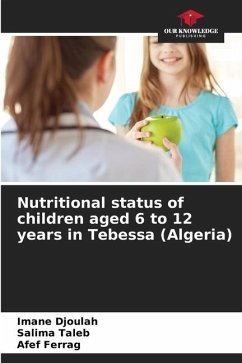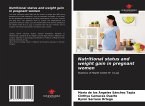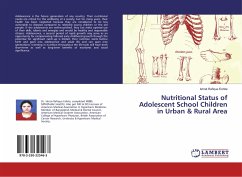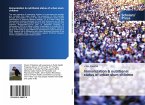The nutritional status of the child is influenced by several factors, including breastfeeding, birth weight and certain socio-economic factors, particularly household income. Among the nutritional problems encountered in children, malnutrition can take the form of wasting, stunting, underweight or overweight. The anthropometric indicators weight-for-height, height-for-age, and weight-for-age are used to assess malnutrition by deficiency or excess using the Z-score or percentile in relation to the median of the reference population. Among the problems of deficiency malnutrition, anemia is a global public health problem affecting mostly women and children. Martial deficiency remains the major cause of nutritional anemia.
Bitte wählen Sie Ihr Anliegen aus.
Rechnungen
Retourenschein anfordern
Bestellstatus
Storno








